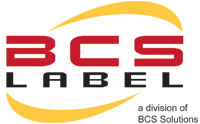
|
 This
printing process consists of a series of four steps: This
printing process consists of a series of four steps:

Step 1: Image Placement - The EBI print head generates
controlled patterns of electronic charges on a
rugged, anodized aluminum transfer drum as the
result of the principle of corona discharge. The
corona discharge process is exceptionally fast
and reliable and similar in some ways to generation
of electrons by the sun in our solar system. There
is one electron beam dedicated to each dot produced
on the image, allowing the engine to operate at
very high speeds.

EBI printing is an efficient "write black" process
where the patterns of charges are applied directly
to the transfer drum. By comparison, electrophotographic
printers first charge the entire drum surface,
and in a second step, remove the charge. This
"write white" process requires sophisticated moving
optics that need frequent maintenance and service
when operated at very high speeds. EBI print engines
are in production and operating daily at speeds
in excess of 450 feet per minute without the complex
support requirements necessary for other digital
print engines.

Step 2: Toner Application - The charged surface
of the transfer drum that forms the latent image
attracts toner particles. EBI toner contains a
controlled percentage of magnetite the ingredient
use in toner for Magnetic Ink Character Recognition
(MICR) printing applications. Inherent in the
EBI printer engine design is the capability to
produce MICR output without complex toner reformulation.
A range of EBI toners are available with different
characteristics to satisfy a variety of applications.

Step 3A: Pressure Fusing - To fuse the toner
into the paper, a simple roller applies cold pressure
to transfer the toner to the paper. EBI print
engines normally achieve greater than 98% toner
transfer efficiency and do not require heated
fusing rollers or consume silicon oil. Cold pressure
fusing completely eliminates the nead for a "developer
station" in the print engine. There is no down-time
required to change the developer that is frequently
a maintenance issue with electrophotographic printer
engines.

Step 3B: Radiant Heat or Flash Fusing - Pressure-fused
EBI images are durable with high permanence. To
help sustain image integrity after rigorous handling
in post processing and mailing applications, a
secondary fusing process is completed before the
paper exits the printing system. A "flash" fusing
station is incorporated in RS Series printers
while continuous "radiant heat" fusion is applied
in the ultra high-speed CR Series.

Step 4: Toner & Charge Removal - To prepare the
transfer drum for the next print image, any residual
charge is removed by the "erase rod". This neutralizes
the surface of the transfer drum in preparation
for re- exposure to the print head. Any remaining
toner particles are removed from the drum by a
simple cleaning roller.
|

|

